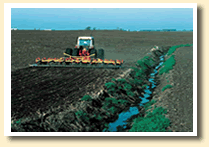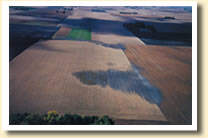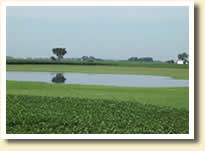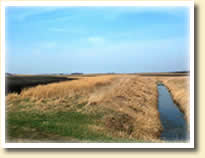

The Little Cottonwood River Watershed Project is a comprehensive program to provide financial and technical incentives to landowners and farmers to use conservation methods that protect and enhance water quality in the watershed. The project is a collaborative effort among many agencies and groups devoted to conservation (credits).
Two frequently used programs are the Filter Strip Program and the Farmable Wetlands Program, both offered through the Conservation Reserve Program (CRP) of the U.S. Department of Agriculture. Under these programs, local landowners and farmers receive low interest loans and technical assistance to restore wetlands, improve tile intakes, plant buffer strips, improve fertilizer and tillage management, and upgrade failing septic systems.
Between the
CRP and the Conservation Reserve Enhancement Program (CREP),
approximately 150 landowners have enrolled an estimated four thousand
acres in the 170 square-mile Little Cottonwood River Watershed. These
‘watershed friendly’ set-asides conserve about 16 thousand
tons of soil and prevent an estimated 4,500 pounds of phosphorus and 80
thousand pounds of nitrates from entering the river each year. The restored
wetlands also store and release water slowly, helping to alleviate downstream
flooding.
Next



